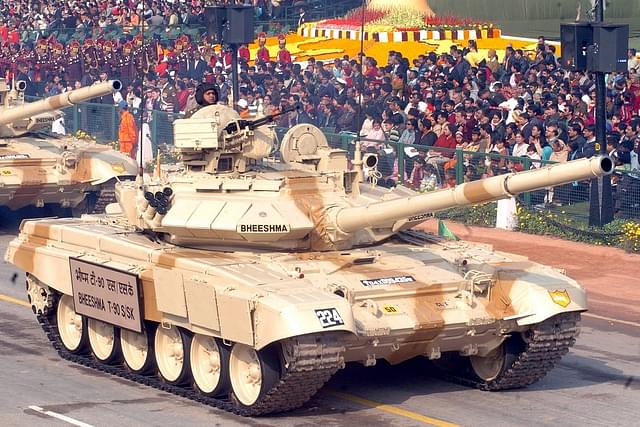
The first advanced T-90 Mark III tanks produced and delivered to the Indian army
The Indian Army has received the first batch of upgraded T-90 Mark III tanks, locally known as the Bhishma Mark III. These tanks were manufactured by the Heavy Vehicles Factory in India. The modernization, which integrates new technologies and systems into the tanks, aims to enhance the combat potential of the current fleet. New Delhi plans to upgrade 300 T-90 tanks.
 A key priority in upgrading the T-90 Bhishma Mark III has been the integration of domestically produced systems. This aligns with India’s long-standing “Make in India” initiative, particularly in the defense sector. This program has required not only Russian but also Western, including American, manufacturers to develop their technological know-how within India.
A key priority in upgrading the T-90 Bhishma Mark III has been the integration of domestically produced systems. This aligns with India’s long-standing “Make in India” initiative, particularly in the defense sector. This program has required not only Russian but also Western, including American, manufacturers to develop their technological know-how within India.
The Bhishma Mark III tank is an advanced version of the T-90, a third-generation Russian main battle tank originally developed by Uralvagonzavod. Tailored specifically for the Indian Army, the Bhishma Mark III includes several upgrades and modifications to meet the operational requirements and environmental conditions faced by Indian forces.
Key Upgrades and Features
Although many details of the project remain classified, some significant aspects have been revealed. The T-90 Mark III has seen a considerable increase in firepower, thanks to enhanced fire control systems, including a digital ballistic computer for simplified aiming and gun control. A Correction Input Device (CID) automatically records and adjusts for barrel wear, working in conjunction with the ballistic computer. The tank now features a commander’s infrared sight with an LCD display and a muzzle reference system (MRS) for improved accuracy.
Additionally, digital communication capabilities have been integrated, enhancing communication among crew members and units on the battlefield. An anti-thermal coating has been applied to reduce the tank’s visibility in the infrared spectrum, making it harder to detect.
Differences Between Bhishma Mark III and T-90
One of the main differences between the Bhishma Mark III and the original T-90 is improved armor protection. The Bhishma Mark III incorporates advanced composite armor and Explosive Reactive Armor (ERA), providing better defense against modern anti-tank munitions.
 The Bhishma Mark III also features an upgraded engine, offering better mobility and combat range. This more powerful and reliable engine ensures the tank can maneuver effectively across various terrains, from deserts to mountainous regions.
The Bhishma Mark III also features an upgraded engine, offering better mobility and combat range. This more powerful and reliable engine ensures the tank can maneuver effectively across various terrains, from deserts to mountainous regions.
In terms of armament, the Bhishma Mark III retains the original T-90’s 125mm smoothbore gun but includes improved ammunition types and an automatic loading system, allowing for faster reloading and a higher rate of fire. The tank is also equipped with advanced anti-tank guided missiles (ATGMs) for extended-range combat operations.
Russian Involvement and Subsequent Developments
Initially, India planned for Russia to be actively involved in upgrading its fleet of T-90 tanks, with plans in place even before the war between Russia and Ukraine began in 2022. At the end of 2021, a batch of T-90 Bhishma tanks was sent to Uralvagonzavod for part of the modernization process. However, the war strained the Russian defense industry, leading to reports that Russia was using Indian T-90s in Ukraine. This prompted a meeting between Putin and Modi, where Modi assured that relations with Russia were intact and that “there are no unsolvable problems.”
During this period, it is possible that a decision was made for Russia not to be pressured to return the Indian T-90s, in exchange for better licensing agreements for New Delhi. Consequently, the Indian factory completed the modernization to the Mark III standard. While this logic is plausible, it remains unconfirmed by reliable information at the moment.



